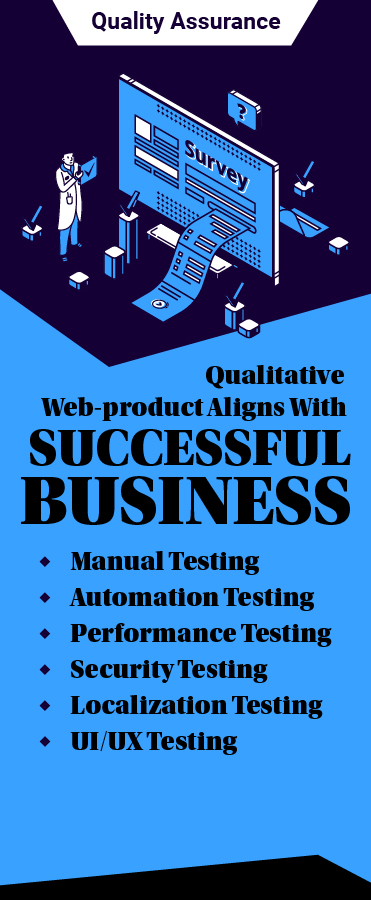In the dynamic landscape of software development, Automation Testing has emerged as a pivotal force, streamlining processes and enhancing the efficiency of quality assurance.
Automation Testing involves the use of specialized tools and scripts to execute predefined test cases, allowing for the automatic verification of software functionalities. Unlike manual testing, where each test case is executed by a human tester, Automation Testing relies on automated tools to expedite the testing process and enhance accuracy.
Nearly 97% of software testing professionals are now using automation, compared to only 50% in 2020.[1] Such is the power of automation testing.
This blog post delves into the core concepts of Automation Testing, emphasizing its significance in the realm of software development, complemented by the integration of artificial intelligence (AI).
Why Automation Testing
75% of organizations that deploy automation testing have achieved automation testing ROI within one year of deployment.[2]

As organizations strive for agility and innovation, automation becomes the linchpin for staying competitive. Rapid release cycles, enhanced test coverage, and improved software quality are imperative for success.
Automation Testing empowers teams to navigate this paradigm shift efficiently, ensuring a swift response to market demands. In a world where time is a critical factor, the adoption of automation becomes not just a choice but a strategic imperative, enabling companies to not only keep pace with industry trends but also to lead and outpace competitors.
Key Concepts of Automation Testing
Automation Testing hinges on foundational concepts that streamline the testing process, enhancing efficiency and accuracy.
At its core are test scripts, automated sequences of actions that simulate user interactions with the software. These scripts, written in programming languages, automate repetitive test cases, significantly reducing manual effort and the probability of human error.
Complementing test scripts is the Automation Testing Framework, a structured set of guidelines, practices, and tools that facilitate the systematic design and execution of tests. The framework provides a robust structure for organizing and managing test scripts, ensuring consistency and scalability. It acts as a blueprint, offering a standardized approach to testing that can be replicated across various projects.
The significance of test scripts and the Automation Testing Framework lies in their collective ability to accelerate the testing process while maintaining accuracy.
Test scripts enable the rapid execution of test cases, allowing for quick feedback on software functionality. Meanwhile, the framework ensures cohesion and maintainability, reducing the complexity of managing diverse test scripts.
Automation testing frameworks also contribute to collaboration among team members as they provide a common structure and methodology. This shared framework fosters consistency in testing practices, making it easier for team members to understand, contribute to, and maintain automated test suites.
Basically, the careful implementation of these key concepts ensures that Automation Testing becomes a catalyst for efficiency, reliability, and scalability in the software development lifecycle.
The Process of Test Automation
The Automation Testing process is a meticulously orchestrated sequence that seamlessly integrates into the software development lifecycle, ensuring efficiency and reliability.
Below, we discuss the process, step by step.

1. Test Automation Feasibility Analysis:
Before diving into automation, assess the project’s suitability. Identify repetitive tasks prone to human error, ensuring that automation brings tangible benefits.
2. Tool Selection:
Choose automation tools aligned with project requirements. Factors like test type, application compatibility, and ease of integration play crucial roles in tool selection.
3. Evaluate Framework:
Assess existing frameworks or decide on the appropriate one based on the project’s architecture and testing needs. A robust framework streamlines the automation process.
4. Develop Framework:
Build a structured framework tailored to the project’s requirements. A well-designed framework enhances test script scalability, maintainability, and reusability.
5. Build POC (Proof of Concept):
Develop a small-scale prototype to validate the chosen framework and tools. This step ensures that the selected approach aligns with the project’s goals.
6. Script, Execute & Analyze:
Develop automation scripts and execute them against the test cases. Analyze results to identify bugs, performance issues, or any deviations from expected outcomes.
7. Scale the Framework:
Extend the framework to cover additional test scenarios and integrate it with continuous integration systems. Scaling ensures comprehensive test coverage as the project evolves.
8. Maintenance:
Regularly update and maintain automation scripts and frameworks to adapt to changes in the application. This step is vital for sustaining the effectiveness of automated testing over time.
The Challenges of Automation Testing

What The Future Holds
The future of automation testing holds a trajectory toward increased efficiency and sophistication. Advancements in artificial intelligence and machine learning are expected to play a pivotal role, enabling more intelligent test automation with self-learning capabilities.
Gartner predicts 69% of the routine work managers do will be automated by 2024. That is especially true in the quality assurance industry.[3]
Continuous integration and continuous testing will become even more integral, ensuring seamless development processes. Additionally, the evolution of automation tools and frameworks will focus on enhanced adaptability, allowing testing to keep pace with the evolving landscape of software development.
Considering Deploying Automation Testing to Release Effective and Efficient Software Solutions? Speak to Our Experts!
Statistics References:
[1] Venture Beat
[2] Magnitia
[3] Gartner












